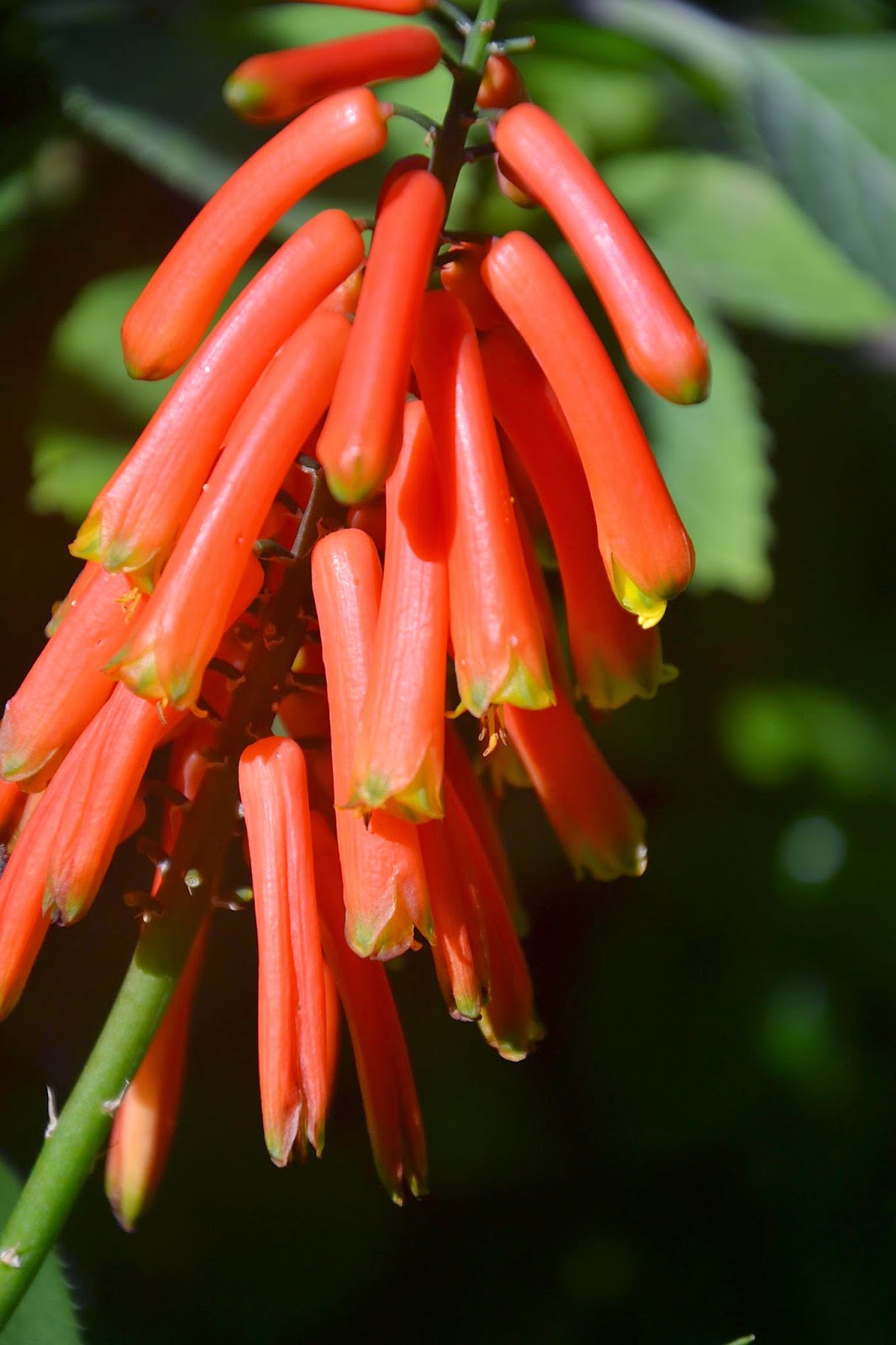Aloiampelos schmaloiampelos
There has been some shake up in the world of aloe taxonomy recently. According to Ernst van Jaarsveld of Kirstenbosch, tree aloes are to be placed in a genus of their own: Aloidendron. Aloe barberae Aloe dichotoma, Aloe pillansii, Aloe ramosissima and Aloe tongaensis will henceforth be known as Aloidendron.
Aloiampelos is the new genus for the climbing aloes – with Aloe ciliaris, Aloe commixta, Aloe gracilis and Aloe tenuior falling in there.
(Read more on iSpot: http://www.ispot.org.za/search/node/Aloiampelos and http://www.ispot.org.za/node/235670?nav=search)
The Fan Aloe (Aloe plicatilis), the subject of an article in Veld & Flora December 2010, has been taken right out of Aloe and placed in the genus Kumara. (It was mistakenly renamed Kumara disticha early in 2013 and corrected in a subsequent publication shortly thereafter.)
I believe there are a few changes in Haworthia too. Haworthia retains the subgenus Haworthia, Haworthiopsis takes the previous subgenus Hexangulares – but with a few species - H. viscosa, H. venosa, H. pungens, H. granulata moving to a new genus, Tulista, which includes the previous subgenus Robustipedunculares too.
http://haworthia-gasteria.blogspot.com/2013/04/new-combinations-in-haworthia-genus.html
The moral of the story? Learn the common names! As Tony Rebelo says “ ... don’t think scientific names are stable. Aloidendron may well be back in Aloe with the next DNA study. A good example is Waboom which has been stable for 350 years, whereas the scientific name has changed from Protea nitida to arborea to grandiflora and then back again. (I can tell generations by what they call it: those who matured pre 1950 use grandiflora, pre 1970s arborea, and the kids nitida! - but all call it Waboom, except the Americans who call it Wha bohm).” http://www.ispot.org.za/node/214840
Aloiampelos is the new genus for the climbing aloes – with Aloe ciliaris, Aloe commixta, Aloe gracilis and Aloe tenuior falling in there.
(Read more on iSpot: http://www.ispot.org.za/search/node/Aloiampelos and http://www.ispot.org.za/node/235670?nav=search)
The Fan Aloe (Aloe plicatilis), the subject of an article in Veld & Flora December 2010, has been taken right out of Aloe and placed in the genus Kumara. (It was mistakenly renamed Kumara disticha early in 2013 and corrected in a subsequent publication shortly thereafter.)
I believe there are a few changes in Haworthia too. Haworthia retains the subgenus Haworthia, Haworthiopsis takes the previous subgenus Hexangulares – but with a few species - H. viscosa, H. venosa, H. pungens, H. granulata moving to a new genus, Tulista, which includes the previous subgenus Robustipedunculares too.
http://haworthia-gasteria.blogspot.com/2013/04/new-combinations-in-haworthia-genus.html
The moral of the story? Learn the common names! As Tony Rebelo says “ ... don’t think scientific names are stable. Aloidendron may well be back in Aloe with the next DNA study. A good example is Waboom which has been stable for 350 years, whereas the scientific name has changed from Protea nitida to arborea to grandiflora and then back again. (I can tell generations by what they call it: those who matured pre 1950 use grandiflora, pre 1970s arborea, and the kids nitida! - but all call it Waboom, except the Americans who call it Wha bohm).” http://www.ispot.org.za/node/214840

Comments